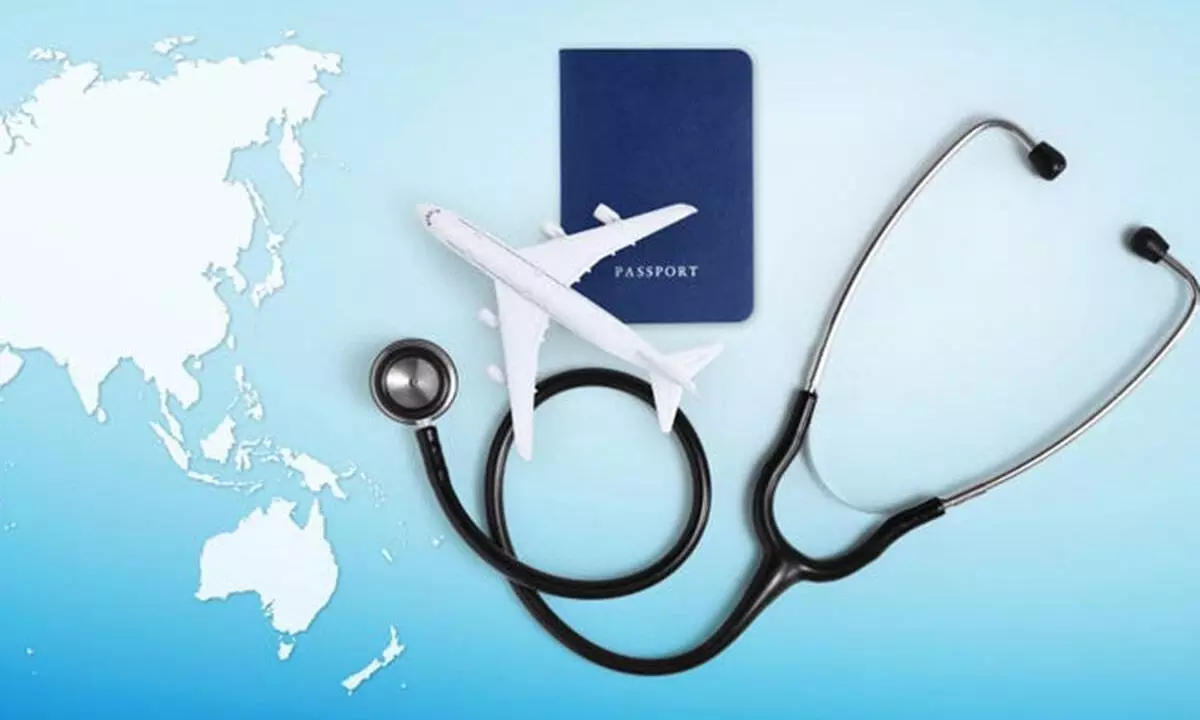Will 'Heal in India' initiative help heal medical tourism in India?

Will 'Heal in India' initiative help heal medical tourism in India?
The initiative will feature special desks at 10 airports, a multi-lingual portal and simplified visa norms for the incoming international passengers, visiting India for medical purposes
To mitigate the impact of Covid-19, the Indian government has announced various measures for revival of tourism sector in the country, which include medical and wellness tourism. It is a known fact that the pandemic with its continued lockdowns, border restrictions, travelling apprehensions and isolations affected the medical tourism more than any other sector in the world. And India was no exception. The entire healthcare system was, with no exaggeration, brought down to its knees and there were massive, unprecedented challenges.
In the post-Covid crisis, medical tourism is indicating positive growth and India is steadily finding its place as one of the key destinations. It is under this background the Union Health Ministry is coming out with the 'Heal in India' initiative which aims to position the country as a global hub for medical and wellness tourism. The ministry is now giving the final touches to the scheme which is likely to be officially launched by Prime Minister Narendra Modi on Independence Day.
The initiative that aims to boost medical tourism in India will feature special desks at 10 airports, a multi-lingual portal and simplified visa norms for the incoming international passengers, visiting India for medical purposes. The portal will display standardized package rates based on the classification of hospitals and different systems of medicines including modern and traditional systems. It will also have a grievance redressal section as well as an option to submit patient feedback.
There will also be a mechanism to track patient journey by creating a unique health ID under the Ayushman Bharat Digital Mission framework and monitor service delivery in identified health facilities in India. The Indian government has identified 44 countries from where a large number of people visit India for medical purposes. The provision of interpreters, special desks, multi-lingual portal, simplified visa norms will be available in ten specific airports such as Delhi, Mumbai, Chennai, Bengaluru, Kolkata, Visakhapatnam, Kochi, Ahmedabad, Hyderabad and Guwahati. These cities have been chosen considering they see higher footfall of patients from these 44 countries. The medical costs, quality of treatment in these 44 countries have also been brought into consideration. These include African, Latin American, SAARC and Gulf countries.
No doubt, medical tourism is one of the most rapidly growing sectors in India. It was valued at an impressive $6 billion in 2020 and is predicted to reach approximately $13 billion by 2026. Some of the major advantages in Indian medical tourism are the cost of treatment, the availability of medical expertise and the advanced healthcare infrastructure, especially in the big cities in the country. As far as cost is concerned, medical tourism in India is considerably cheaper than the developed nations like the US, the UK, European countries, etc. It is also important that medical tourism does not just support the medical industry alone, in also gives fillip to the in-bound tourism and hospitality. With access to opportunities and global reach, the government can help position India as the most cost-effective and state-of-the-art destination for medical tourism. For that purpose, Public-Private Partnership (PPP) can be a better option for medical tourism. While the private sector can bring its experience and investment to the table, the public sector can help augment it with a conducive policy framework and global outreach.
Of course, as the experts in the sector say, the PPP approach in medical tourism is an ideal way to position India as the global destination for healthcare access. The private sector is recognized for skilled medical staff and infrastructure. Its corporate framework can help in managerial proficiency and staff efficiency to help the sector grow. It can help with cost-optimization and help in extending R&D and technological advancements. With healthcare and diagnostics continuously evolving in terms of technology and new offering in equipment and tests, strategic investments are crucial to sustain the cost-optimized care.
This needs to be supported with updated skills of medical professionals to give a fillip to cash inflow from medical tourism. Further, there needs to be standardization in framework of clinical care and the treatment cost across surgeries, wellness, Ayush, etc. This will ensure that the treatments process and pricing can build the much-needed trust with the patients. Currently, different hospitals have different service and monetary packages for similar treatments so having standardization or a framework will bring harmony to the process. Now the question in everybody's mind is, Will 'Heal in India' initiative help heal the ailing medical tourism sector in India?
(The author is freelance journalist with varied experience in different fields)
















